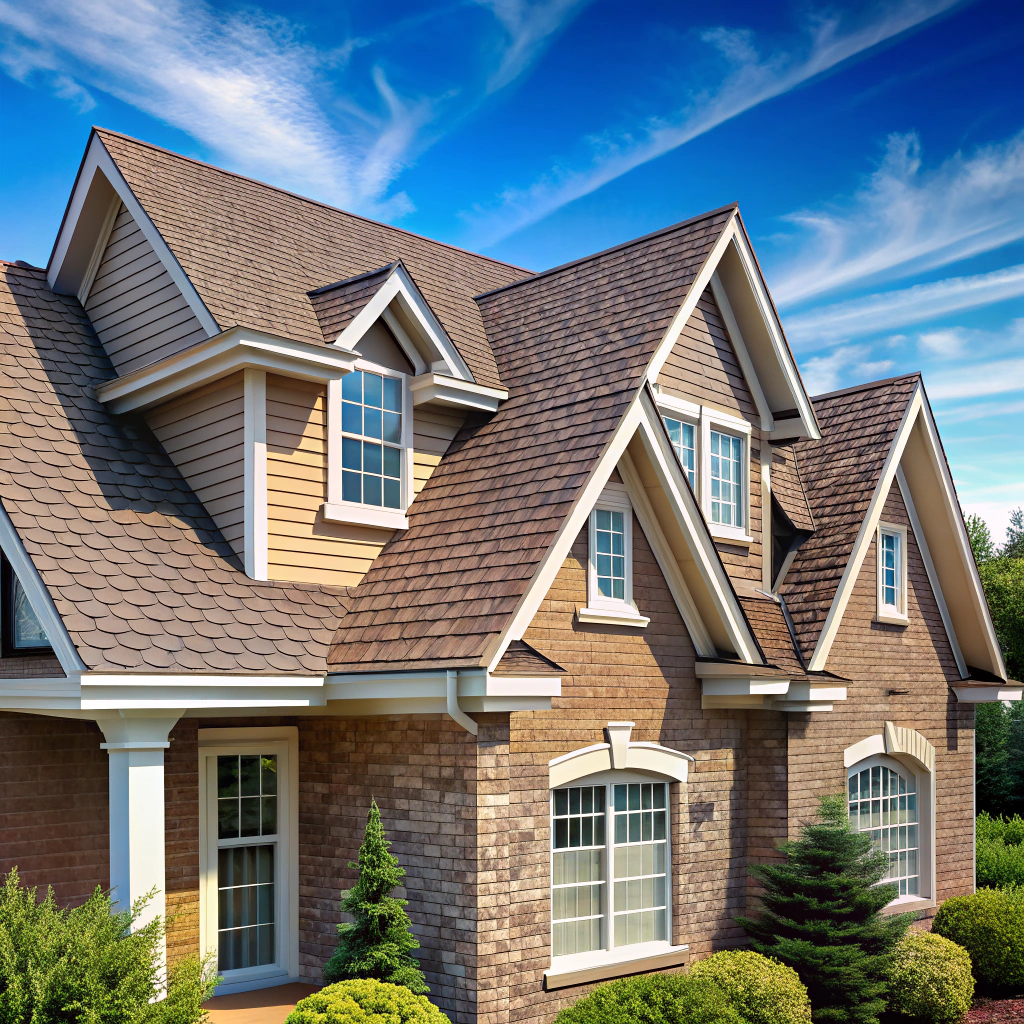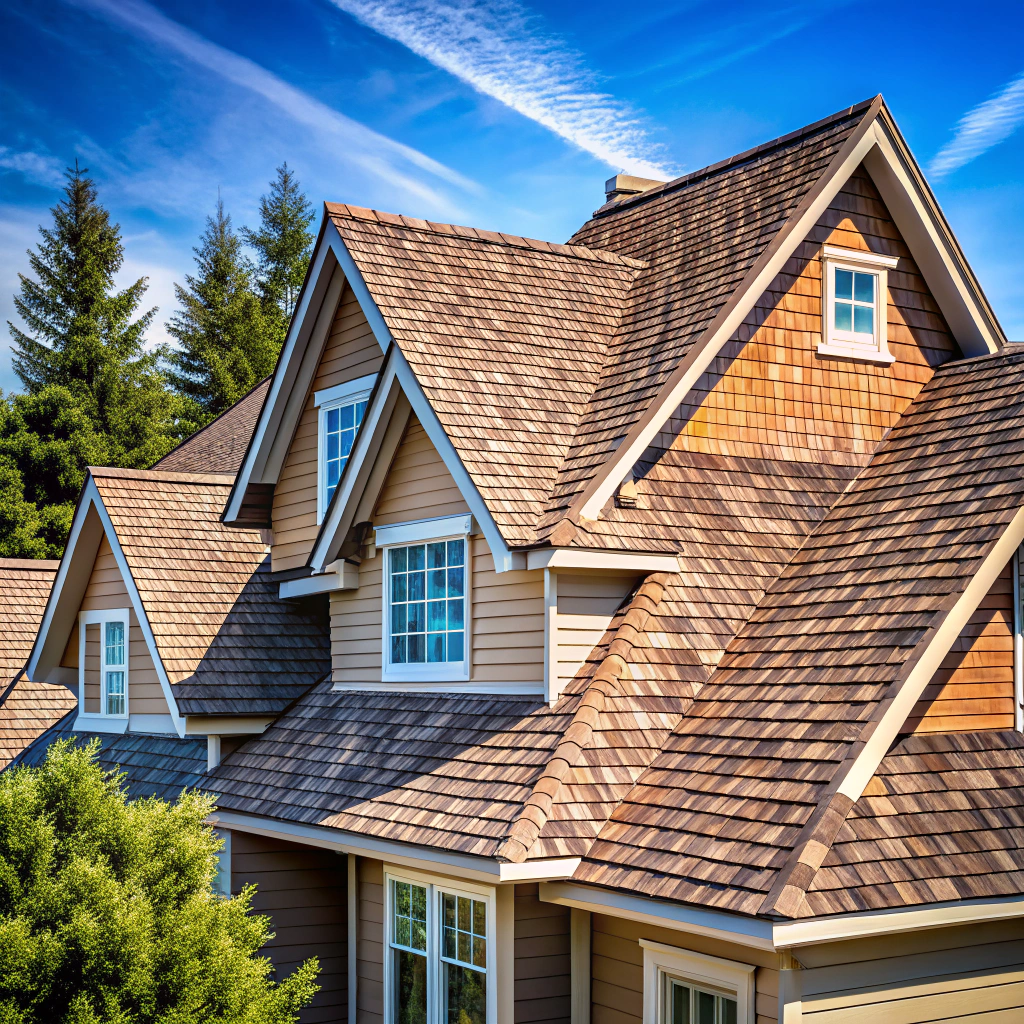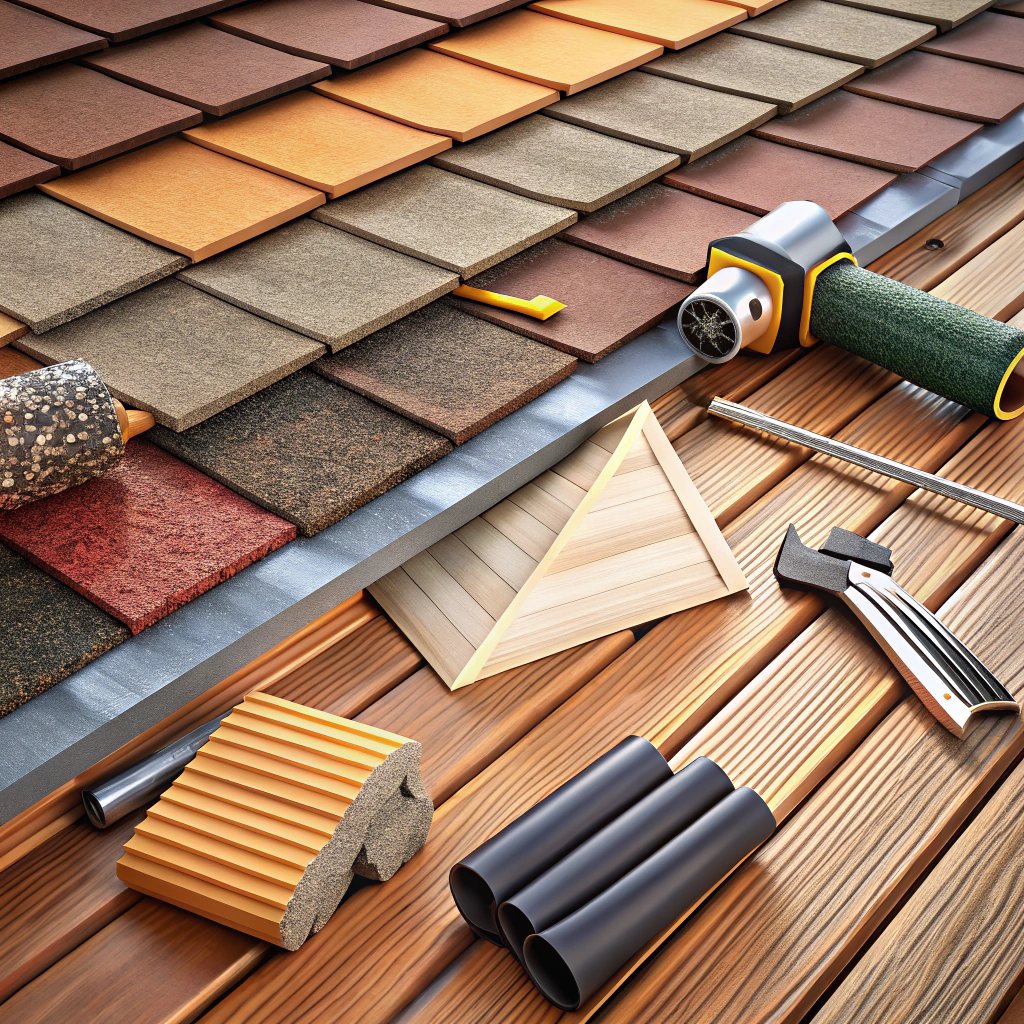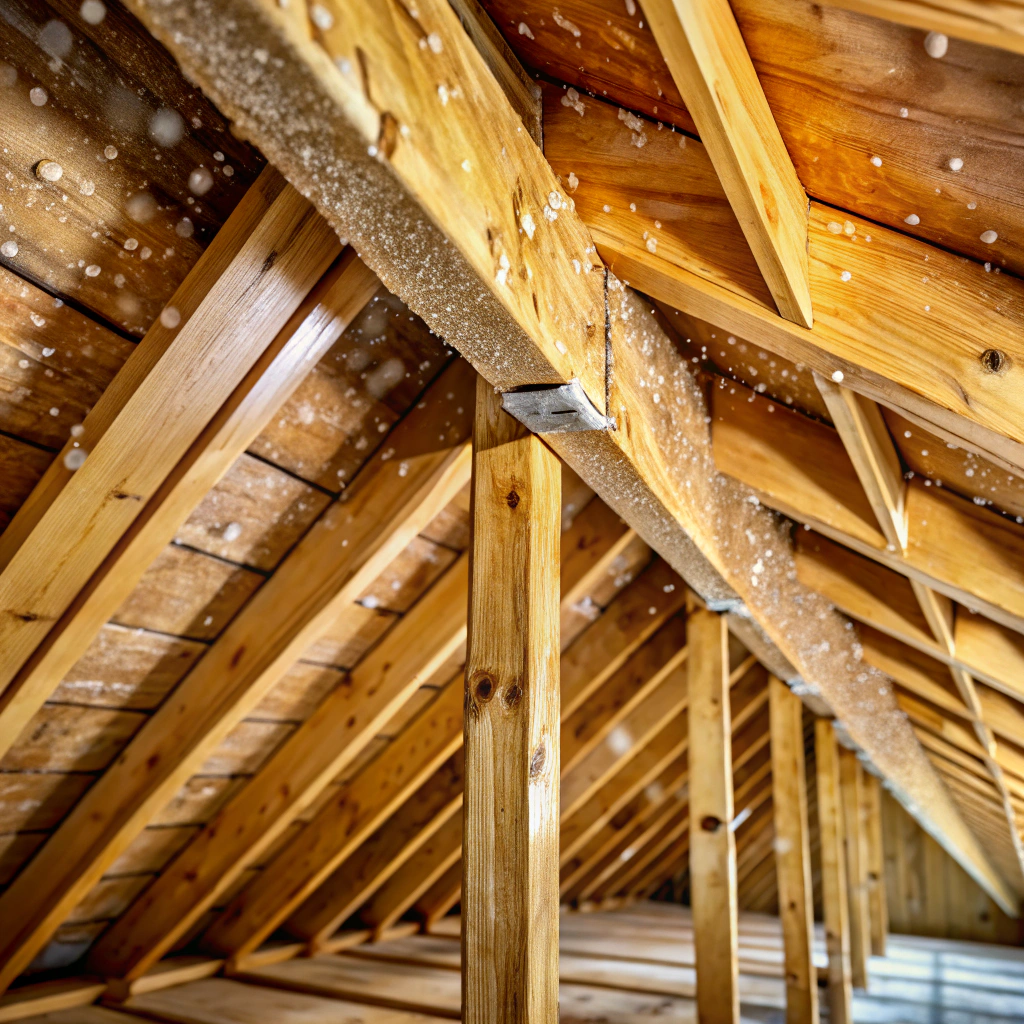Last updated on
Discover the critical role of fascia on a house and why it should never be the unsung hero of your roofing system.
Fascia might sound like a secret sauce used by architects or a villain from a superhero flick, but fear not—it’s more down-to-earth! This critical component of your roofline acts like a belt for your house, holding everything in just the right place while looking stylish. From functionality and materials to costs and care, we’ve got the scoop on all things fascia. Ready to get schooled on this unsung hero of home architecture? Strap in and read on while we nail down the details!
Key takeaways:
- Fascia is crucial for roofline stability and aesthetics.
- It protects against moisture, pests, and weather damage.
- Materials include wood, vinyl, aluminum, and composite.
- Regular inspection and maintenance prevent costly damage.
- Fascia serves as a stylish trim and gutter support.
Elements of a Roofline

Think of a house’s roofline as its stylish hat. It’s not just about looking good; it plays a key role in keeping the house safe and snug. Here’s a glimpse of what’s involved:
Roof Decking: The undercover hero, providing the base for everything above. Think of it as the roof’s muscle.
Shingles: The sassy top layer, protecting everything beneath from rain, snow, and occasional bird pranks.
Ridge: Where two sloping sides of your roof meet. This is the roof’s Mohawk!
Gutters: These diligent assistants whisk water away, so you don’t end up with a moat around your home.
Soffit: The cozy undersides of the eaves – perfect for hiding and ventilating.
Finally, the fascia – the frontline defender, sitting pretty at the roof’s edge, holding everything together.
Stay tuned for more on fascia!
Fascia Functionality
Picture fascia as the unsung hero of your roofline, preventing things from going haywire. It acts as:
A Stubby Shield: Fascia boards bravely defend your humble abode’s interior from unwanted guests—be it moisture, leaves, or critters with fancy diets.
The Helper of Gutters: They may not wear capes, but fascia boards provide essential support, holding gutters and ensuring rainwater flows correctly. Think of them as the sidekicks gutters always wished they had.
A Dapper Detail: A clean, sleek look that ties the entire roofline together, bringing a handsome finish to your home’s exterior. Fascia adds a touch of class that’s more impressive than a bow tie on a llama.
The Everlasting Guardian: Safeguarding your rafters and roof edge from the elements, the fascia ensures your roof doesn’t start shedding tiles like a forgetful lizard.
In essence, fascia serves multiple roles with distinctive flair, unmatched by most ordinary boards.
Fascia Materials
When it comes to fascia materials, it’s like choosing toppings for your pizza—everyone has their favorite, and each option brings something unique to the table. Let’s dive into the world of fascia materials and their benefits.
- Wood: Classic, charming, and the granddaddy of fascia materials. It’s like that pair of shoes that goes with everything but needs a bit of polish now and then to stay in top form. However, wood can be high-maintenance, requiring regular painting and protection from rot.
- Vinyl: Think of vinyl as the low-maintenance cousin who never forgets your birthday. It’s resistant to rot and insect damage, and it comes in a buffet of colors. While it may not boast the natural allure of wood, it makes up for it with durability and ease of care.
- Aluminum: Sleek, modern, and as light as a feather. Aluminum is a reliable choice for those who love functionality with a touch of flair. It’s resistant to corrosion and is reminiscent of that friend who never seems to age.
- Composite: The chameleon of fascia materials, combining the virtues of wood and vinyl. It has the aesthetic appeal of wood with the easygoing nature of vinyl. Truly, composite is the best of both worlds for those who can’t decide.
Your choice boils down to balancing aesthetics, maintenance, and durability. Each material has its merits, much like choosing between chocolate and vanilla—both satisfy in different ways, but it’s your personal preference that counts.
Is Fascia Considered Trim?
Indeed, fascia is the unsung hero of trim, hiding in plain sight. It’s that decorative band running at the edge of your roofline—like the eyeliner of your home’s façade.
Think of it as the stylish belt cinching a fashionable coat, pulling everything together. Yet, it does more than just accessorize: it’s essential for managing water flow and keeping those pesky squirrels out of your attic.
Fascia boards come in a variety of materials—wood, vinyl, aluminum—each with their own unique flair. They add a polished touch, like cufflinks on sleeves.
Installing and maintaining fascia trim can boost curb appeal and chic factor! A fresh coat of paint on fascia is like a new pair of shoes for your home; suddenly, everything looks spruced up.
Choosing Fascia for Your Home
Selecting the right fascia involves a delightful game of balance. You’re not just picking something to cover your eaves; it’s all about style, durability, and maintenance. Imagine you’re awarding a sash at a roof beauty pageant.
– Material Magic: Opt for vinyl if you’re tired of painting. Wooden fascia is a classic but needs to be pampered now and then. Aluminum is the superhero, resisting rust and requiring little attention.
– Color Charisma: Compliment your house like you’re matching socks to a quirky outfit. Neutral tones are safe bets, but why not dare to mix some pizzazz into your palette?
– Climate Consideration: If your house endures tropical tantrums or freezing frenzies, make sure your fascia isn’t the drama queen and can handle the pressure.
– Budget Bliss: Don’t break the bank—or the piggy bank. Weigh the cost against longevity. Sometimes, spending a little more upfront saves grief later.
In the world of fascia, choices abound. Make yours wisely, and your house will not only be sturdy but also sport the equivalent of curb appeal couture.
Fascia Costs
Fascia won’t break the bank, but it’s no free lunch either. Get ready to juggle your budget just a bit. Costs vary based on material, length, and whether you decide to go the DIY route or hire a pro.
- Material Matters: Got champagne tastes? Wood fascia can be a bit pricier, while vinyl will have your wallet breathing a sigh of relief. Aluminum splits the difference.
- Size Counts: The longer your house, the longer the fascia. Yes, that means more buck for your bang. Remember, your palace needs its crowning glory!
- Instal-stination: Feel skilled enough to wield a hammer? DIY might put a smile on your wallet’s face. Calling in an expert? Expect labor to add a little extra to the bill.
Keep your eyes peeled for seasonal sales; your fascia deserves a frugal fanfare. And remember, while saving is smart, investing in quality keeps the gremlins at bay longer.
Fascia Care and Replacement
Keeping your fascia in tip-top shape is like flossing for your roof. It may seem like extra work, but it can prevent bigger problems down the line.
Regularly inspect the fascia for signs of damage or wear. Look out for peeling paint, moisture marks, or evidence of rot. Remember, fascia should be water’s best friend – not its victim.
Clean gutters and fascia at least twice a year to prevent water buildup. Think of it as a free workout with the added bonus of protecting your home.
If you spot damage, don’t hesitate to call a professional. Quick repairs can save you money in the long run. Fascia replacement might sound scary, but it’s less frightening than a haunted Halloween house built on rot.
Selecting durable materials during replacement can add years to your fascia’s life. Opt for materials that laugh in the face of time and weather.
By keeping your fascia healthy, you maintain not just the looks but the function of your roof, making everything a little less, well, sketchy.
Signs of Fascia Damage
When it comes to the health of your fascia, ignoring problems might come back to bite you like a leaky vampire. Look out for these tell-tale signs:
Discoloration: Is your fascia looking a bit like an old banana? Discoloration often points to water damage.
Peeling Paint: Like a snake shedding its skin, peeling paint means your fascia isn’t feeling its best. This can indicate moisture is trapped inside, which can lead to rot.
Soft Spots: Fascia should be firm. If it’s squishy to the touch, that’s a problem—more squishy than grandma’s overcooked carrots.
Visible Rot or Mold: Any creepy crawlies like mold or mildew are not welcome. They signal that moisture has taken up residence where it shouldn’t.
Sagging Sections: Sagging fascia may make your roofline look like it’s frowning. And who wants a grumpy house?
Keep an eye out for these issues. It’s crucial to address them before your fascia turns into a Shakespearean tragedy of leaks and structural havoc.
Is Fascia Part of Roof or Siding?
Fascia often engages in a little identity crisis—roof or siding? The answer: it’s more like a charming diplomat, bridging both worlds. Here’s the gist on how it plays its part:
- Fascia supports the edges of the roof and provides the base for your home’s gutter system. On sunny days, it’s a roof accessory; on rainy days, it’s the gutters’ best friend.
- It also serves as a finishing touch that lines the edge of your roof, giving it that crisp look. Think of it as gilding the lily, but for homes.
- While siding usually gets the fame for wall-covering, fascia complements it by acting as a sleek transition between wall and roof.
- By keeping the elements away from your roof’s innards, it cheekily helps both roof and siding stay in tip-top shape.
In essence, fascia is like the referee between roof and siding. It ensures they all play nice in the world of curb appeal and functionality.




